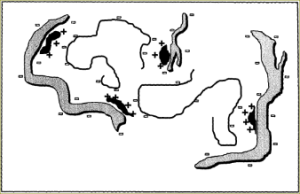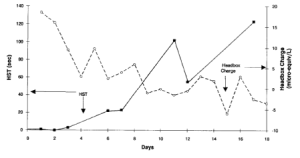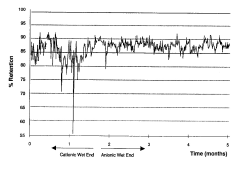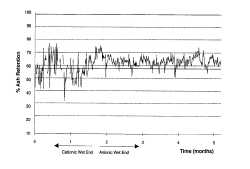Achieving the balance of charge in the paper material is critical to the operation and profitability of the paper machine. Today’s article explains a case of using charge analysis to optimize the production of a paper machine, hoping to give you a little help.
The paper machine in this case uses neutral papermaking to produce a cultural paper. The fiber raw material is a mixed pulp of softwood and hardwood, the filler is precipitated calcium carbonate, and the wet end additives include AKD internal sizing agent, cationic starch enhancer and a binary polymer retention system. The mill suffered from the low retention rate for a long time. The paper mill responded by increasing the amount of retention aids, but found that the use of sizing agents in the pulp far exceeded the industry’s conventional level. Nonetheless, the sizing degree of the base paper entering the sizing press is very low: the Hercules sizing test (HST) is only 0-2 seconds. This leads to frequent paper breaks at the sizing press, and the paper mill spends too much time to rethread the paper; in addition, the paper machine has a large amount of sediment problems, and paper holes and paper breaks are more serious.
The paper mill used the Cationic Demand Titration (CDT) method to inspect the wet end of the paper machine, and the results showed that the system was cationic. Both theory and experience tell us that the wet end system of the paper machine is cationic and often runs poorly. As shown in Figure 1, in an over-cationized system, the sizing agent particles cannot be well adsorbed to the fiber due to the mutual repulsion of charges.
Figure 1 Excessive cationized pulp system
In order to solve this problem, paper mills began to slowly reduce the addition of cationic charge contributors (ie, additives with high positive charge density and low molecular weight) in the binary polymer retention system to restore the anionic charge on the surface of the fiber. The mechanism of action of the binary polymer retention system is shown in Figure 2.

Figure 2 Mechanism of Binary Polymer Retention System
In the figure, the first element of the binary polymer retention system is a polyelectrolyte with high positive charge density and low molecular mass. After adding the pulp, it will preferentially interact with the anionic garbage in the system or adsorb to the fiber to provide anchoring points to secondary anionic polymer with low charge density and high molecular mass, and the latter uses a bridging mechanism to generate large flocs from the paper stock.
With the decrease in the amount of positive charge contribution additives, the charge of the paper stock at the headbox began to change in the negative direction (dotted line in Figure 3), and the sizing degree of the base paper gradually increased (solid line in Figure 3). A careful analysis of Figure 3 shows that when the charge of the paper material is close to neutral, the sizing effect begins to recover significantly; when the paper material finally becomes net anionic (-2 microequivalents/liter), HST exceeds 100 seconds; continue to reduce the cationic charge contribution With the amount of additives, the negative charge of the paper material gradually becomes larger, and at the same time the HST reaches more than 100 seconds, which far exceeds the requirement of the sizing press for the sizing degree of the base paper.

Figure 3 The effect of reducing the amount of positive charge contribution additives (anionic garbage trapping agent) on paper charge and paper sizing degree
When the paper material is over-cationized, a larger amount of anionic retention aid is needed to overcome the excessive charge repulsion between the materials. Once the charge repulsion is weakened, a smaller amount of retention aid can ensure the retention rate, and too high a dosage of retention aid can cause excessive flocculation and damage the evenness of the paper.


Figure 4 The change of the first leg retention and the first leg ash retention after several months of optimization
Figure 4 shows the change of the first pass and the first pass ash retention during paper machine optimization. It can be seen that both have been improved and maintained at a relatively stable value.
With the increase and stability of retention rate, other good changes have been brought about. The benefits of using the CDT method to optimize the wet end are summarized as follows:
(1) The paper machine’s first journey total retention and first journey ash retention can be improved and stabilized;
(2) With the increase of retention rate, paper machine deposits, paper holes, paper breaks and other phenomena have been significantly reduced;
(3) Greatly reduce the cost of using additives;
(4) CDT can be used to quickly track the source of the abnormal charge, predict the fluctuation of the amount of chemical additives caused by the change of the charge of the paper material, and better avoid the high cost that may be incurred by the abnormal system.

